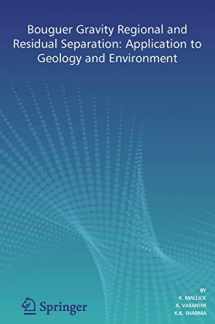
Bouguer Gravity Regional and Residual Separation: Application to Geology and Environment
ISBN-13:
9789400704053
ISBN-10:
9400704054
Edition:
2012
Author:
K.K. Sharma, K. Mallick, A. Vasanthi
Publication date:
2011
Publisher:
Springer
Format:
Hardcover
260 pages
Category:
Civil & Environmental
,
Engineering
FREE US shipping
Book details
ISBN-13:
9789400704053
ISBN-10:
9400704054
Edition:
2012
Author:
K.K. Sharma, K. Mallick, A. Vasanthi
Publication date:
2011
Publisher:
Springer
Format:
Hardcover
260 pages
Category:
Civil & Environmental
,
Engineering
Summary
Bouguer Gravity Regional and Residual Separation: Application to Geology and Environment (ISBN-13: 9789400704053 and ISBN-10: 9400704054), written by authors
K.K. Sharma, K. Mallick, A. Vasanthi, was published by Springer in 2011.
With an overall rating of 4.2 stars, it's a notable title among other
Civil & Environmental
(Engineering) books. You can easily purchase or rent Bouguer Gravity Regional and Residual Separation: Application to Geology and Environment (Hardcover) from BooksRun,
along with many other new and used
Civil & Environmental
books
and textbooks.
And, if you're looking to sell your copy, our current buyback offer is $0.3.
Description
The process of regional-residual separation in potential field is age-old. Broadly, there are two techniques for regional-residual resolution, viz., graphical and analytical. Both the techniques have their own respective shortcomings. In this book, the authors have described the technique based on finite element method in which only eight (or twelve) nodal observed gravity values are used for the regional computation, thereby eliminating the possible contamination of anomalous fields and also the technique does not assume an explicit model and physical properties like density of rocks etc. in the regional computation. The book discusses the advantages of this technique viz., it is not site-specific; the computation is independent of any prior assumptions as to the form and depth of shallow or deeper structures; it can handle data distributed at random or on a regular grid on the map space; and the neighbouring surveys join smoothly. The book focuses on application of this new technique which has been demonstrated in different fields, such as hydrocarbon, minerals and groundwater, structural studies, earthquake and engineering studies and impact structures.


We would LOVE it if you could help us and other readers by reviewing the book
Book review

Congratulations! We have received your book review.
{user}
{createdAt}
by {truncated_author}


